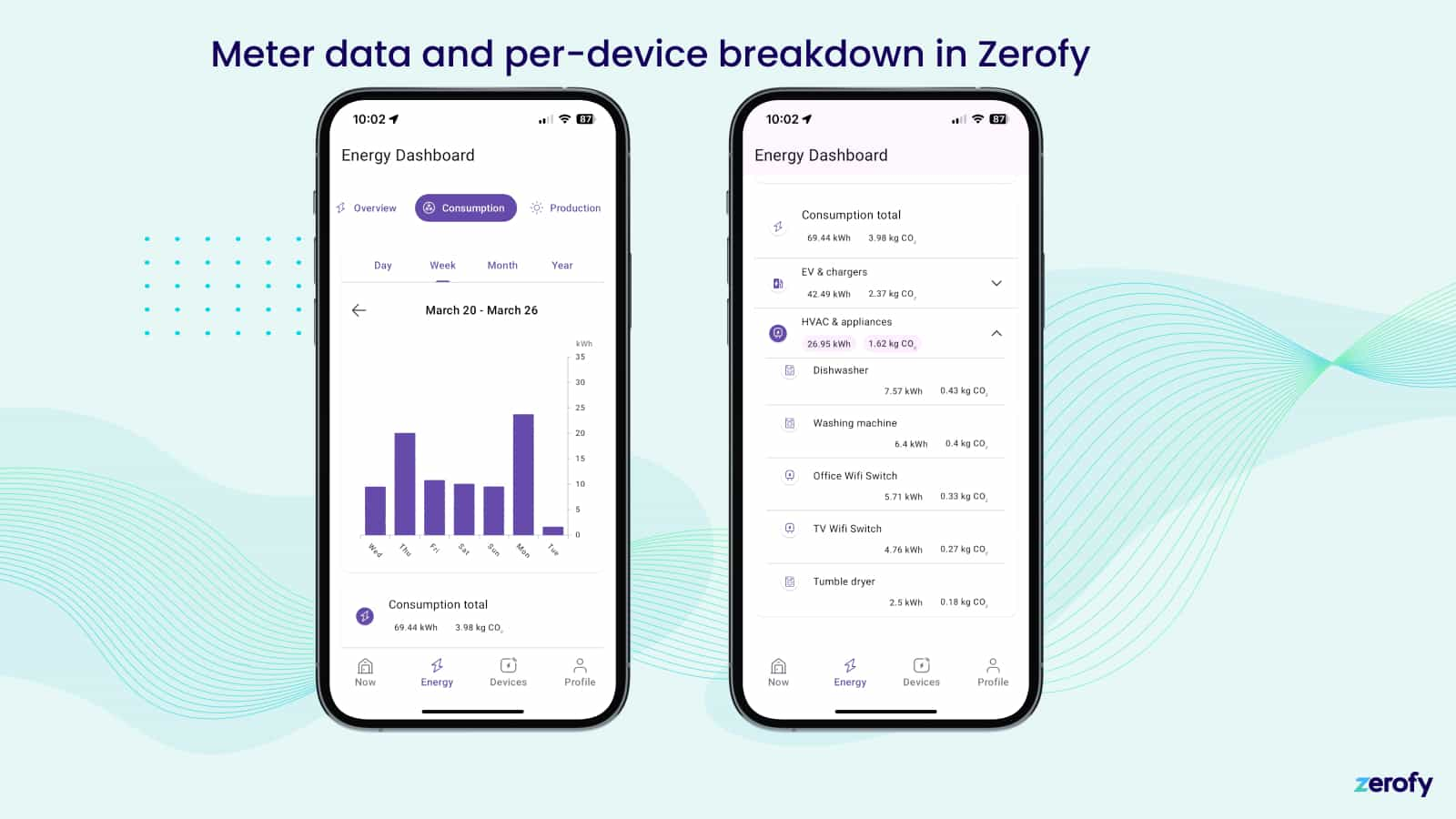How to get access to your real-time electricity meter data
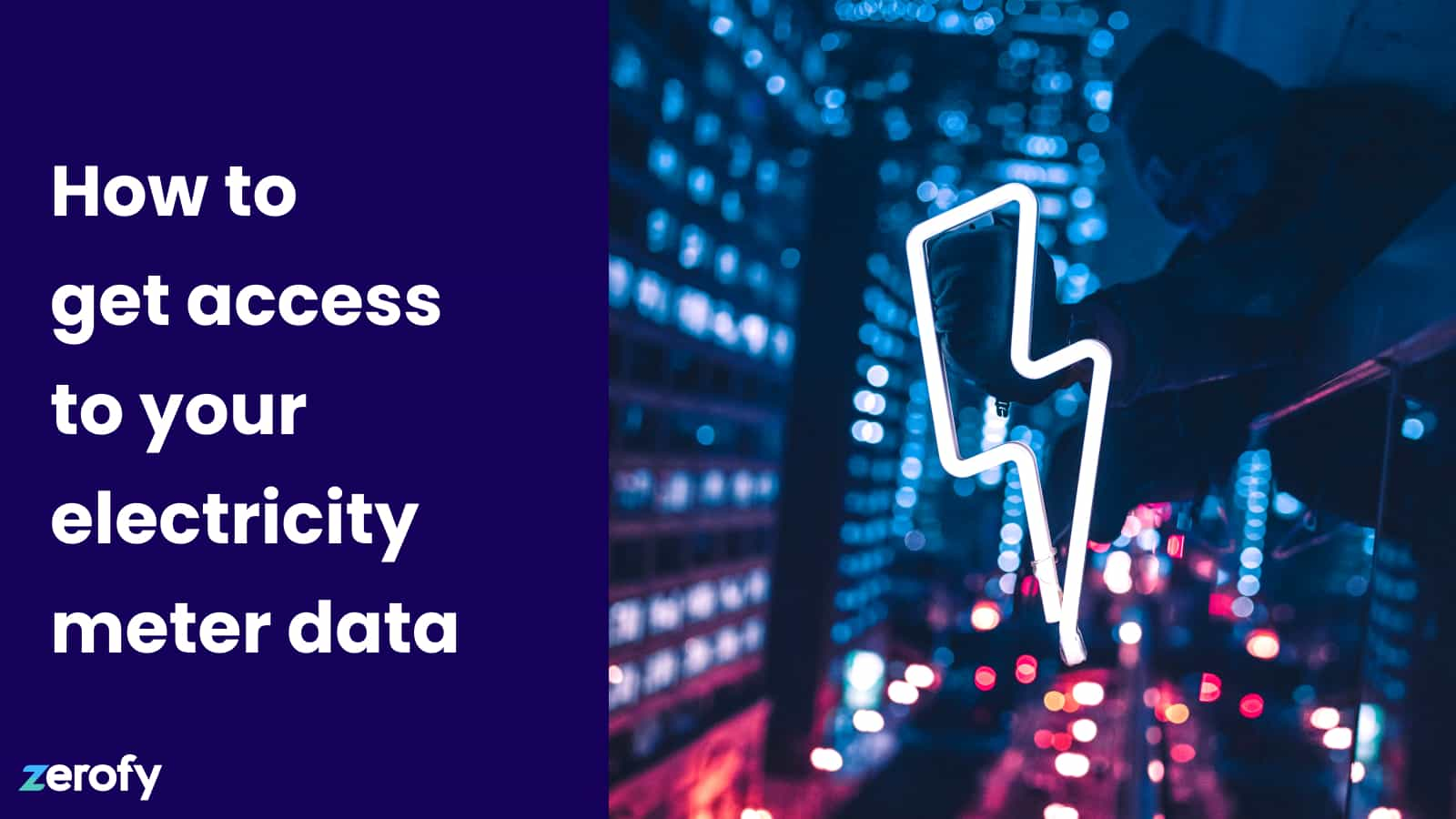
“You can’t improve what you don’t measure”, goes a saying. This also holds for energy consumption, in particular electricity. As electrification of household energy demand progresses with the adoption of EVs, heat pumps, etc. measuring and smartly using electricity becomes increasingly important.
Understanding electricity consumption is relevant in many stages of a household’s electrification journey:
- A household that is just starting out with electrification may want to install rooftop solar. But to properly dimension the system historic electricity consumption at a granular level (at least hourly) is very helpful. Such a household may also simply try to get a basic understanding of which appliances use the most electricity.
- A household that already has solar installed, but thinking of getting a home battery may want to do a ROI calculation of such a system, and/or dimension the battery.
- With the introduction of hourly dynamic electricity tariffs, households want to understand what is the best tariff for them based on their historic consumption.
- Finally, a fully electrified household with EV, heat pump etc. has a high incentive to optimize electricity costs, and metering is a basic necessity for any analysis or smart home energy management system.
Smart Meters enable high frequency and digitally connected measuring of electricity consumption. Their rollout across Europe is in varying states of progress:
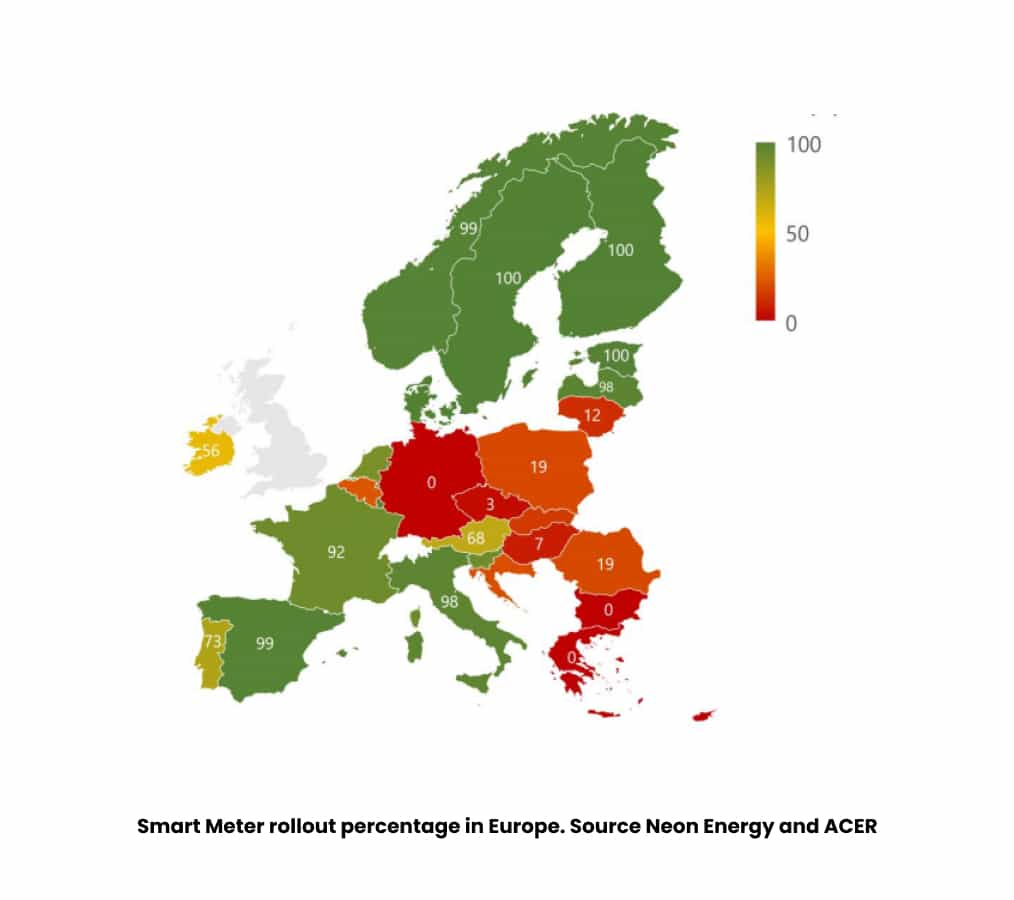 Source: Neon Energy and ACER
Source: Neon Energy and ACER
Scandinavia, Spain, and France are leading the pack, while e.g. Germany has very low penetration but is now experiencing rapid installation growth.
But once a smart meter is installed, how can you get access to its data? Or what are some alternative ways to get historic and real-time electricity metering data? In this post we shed some light on these questions.
Six options for electricity meter data access
We are looking here at ways to get current data with little delay, at frequency of at least 15 minutes intervals, and if possible both power and energy data.
1. Cloud connected meters
Some electricity meters come with a built-in cloud-interface and backend, which users can directly access through a portal or an API. If your energy provider installs the meter for you, they may give you direct access to the vendor’s portal/API or they may offer you access through the provider’s API. Examples of such cloud-connected meters are for example smart-me and Discovergy. Such cloud-connected meters are probably the most flexible solution when it comes to accessing your energy data, but either your energy provider (or Messstellenbetreiber in Germany) install such a device, or you need to install it as an additional sub-meter at your own cost.
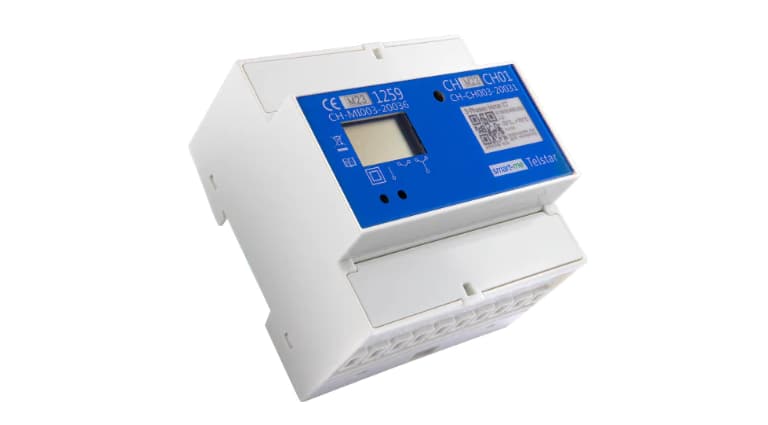
Note that smart-me meters also directly integrate with Zerofy and you can order a device in our store.
2. Local interface of your digital or smart meter (optical and P1)
Modern digital meters and smart meters typically have a local digital interface to read your data. (In many countries such a local access interface is required by law). There are several such interfaces but common ones are either an optical interface or a so-called P1 port.
The optical interface is either a LED or infrared light that pulsates at the rate the electricity is consumed. There are reader devices available that attach to this interface and then transmit the data for example via WiFi. Powerfox is such a reader that works in and is popular in Germany, for example.
The P1 interface in contrast is not optical, but usually is a data plug (RJ12, similar to a phone plug). The so-called P1 meter data transmission standard was developed in the Netherlands, but is now applied in various countries (Benelux, Scandinavia, DACH, Hungary, Lithuania, …). You can find P1 “dongles” online that read and transmit the data via Wifi or LAN.
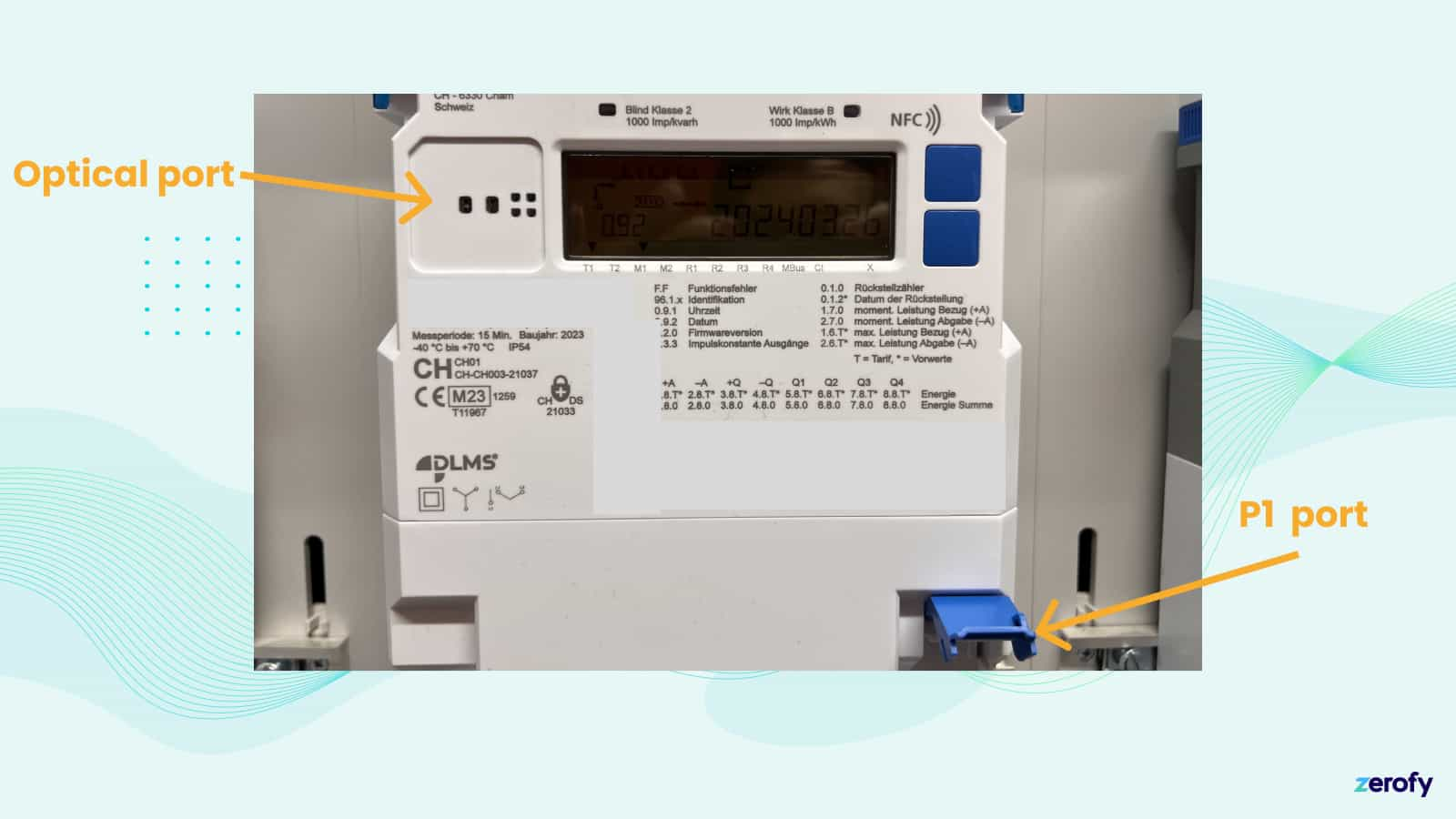
3. Additional energy meter (with electromagnetic induction principle)
You can buy small energy meters that you can install in addition to the utility main meter at any place where it fits. These small meters measure the power with current transformers that operate based on electromagnetic induction. In practice this means you put a small clamp around the (each of the three) phase wires, which measures the electric current. These clamps can be installed without detaching any electrical wiring. The clamps then plug into an energy meter device, which has its own power supply and transmits the data via WiFi, LAN, etc.
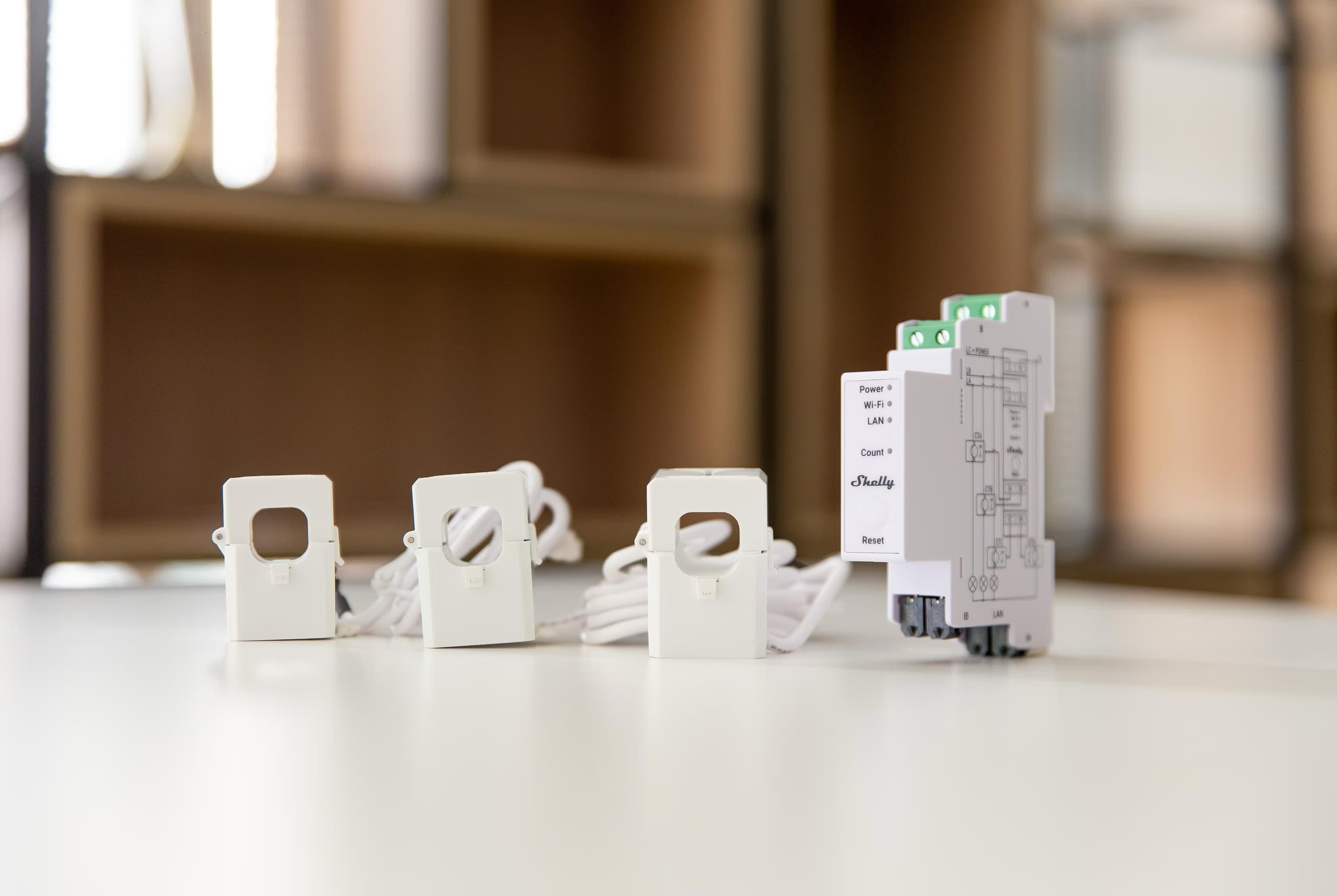
The advantage of these devices is that they can be installed anywhere, where you have access to the main phase wires, also away from the meter. For example, when you live in an apartment you can install such a device in your sub-panel without access to your main meter. (Note that depending on the device and the regulation in your country you still may need an electrician to do the work, even though there is no unscrewing of any power wires required.) The same type of meter can also be used to measure at any other place, for example a larger device or solar production.
One such meter is the Shelly 3EM or Pro 3EM, which is available for a little over 100 EUR. It integrates with Zerofy, and you can also order it directly from our online shop.
4.Metering data from your rooftop solar installation
Many rooftop solar installations have an electricity meter installed together with the solar inverter and potentially other devices. This meter is separate from the utility meter, but often is installed in such a way that it measures the net consumption of the household. (Sometimes an additional production meter, which only measures solar production, is also installed). As most inverters such as Huawei Fusion Solar, Fronius, Growatt, SMA etc. offer cloud API access, the data of these meters can be accessed simply via the same API.
Zerofy integrates with various such inverters and for many we provide access to the meter data right in the Zerofy app, if a meter is installed in the same configuration.
5. Energy provider portal and API
As smart meters are installed, most energy providers provide a web portal to access the metering data. (Here again in many countries such a portal is mandated by law). The quality of these portals varies, as do the meter data available. Often it is available only with a day delay, at max 15 minute intervals (often hourly), and there is no API provided to easily access the data for use outside of the portal visualization. This is a missed opportunity, since the data is already digitally collected, access managed and providing it through an API would be a small additional step.
One great example of an open utility API is Swiss Utility CKW, who provide simple access to households’ metering data with an API and permission based on OAuth. Zerofy integrates with CKWs Open Energy API: CKW customers can login with their portal account right in Zerofy, to make their meter data available to the Zerofy app.
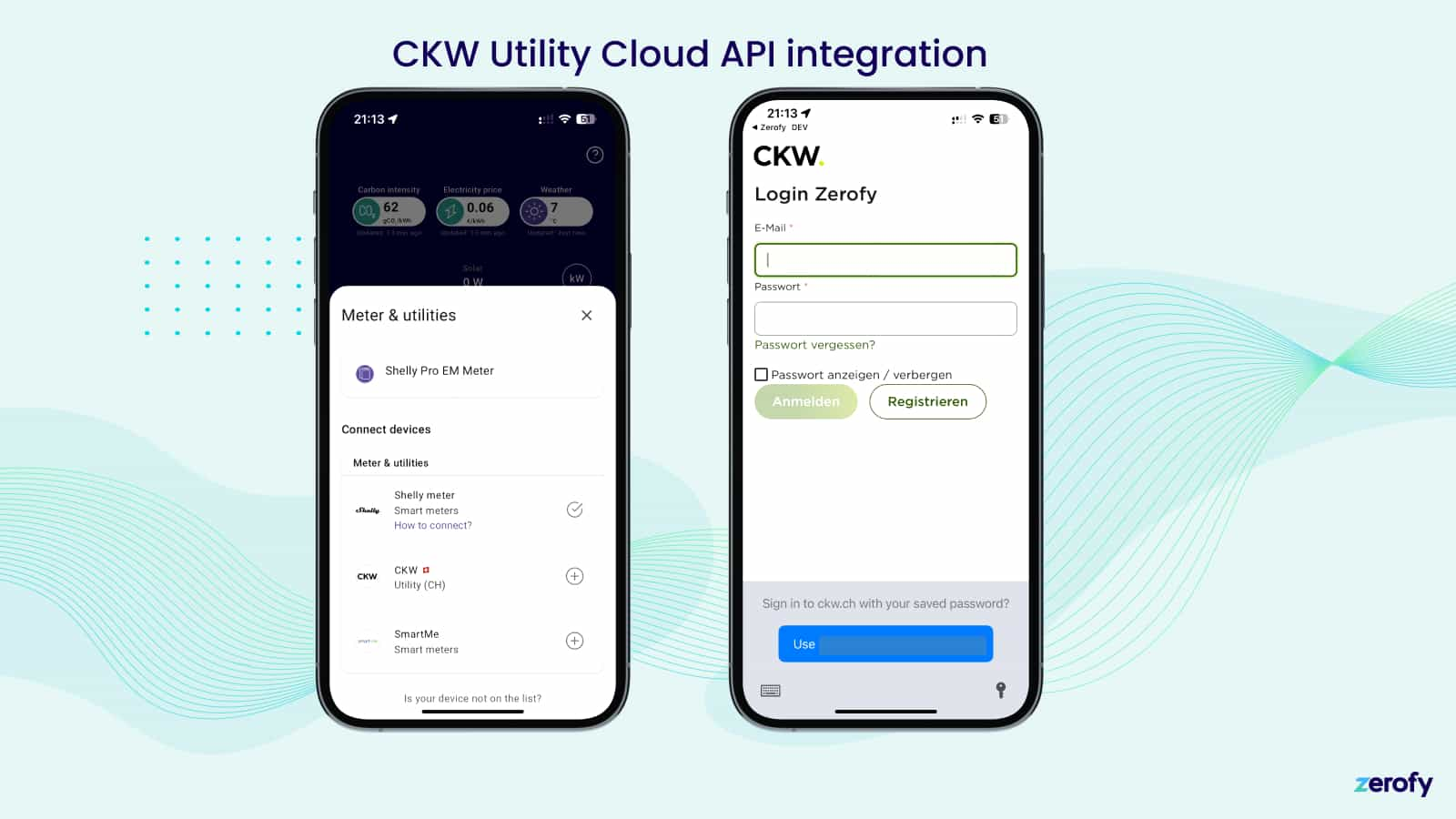
6. Nationwide meter data access with national digital identification
In some countries all metering data from all energy providers can be accessed through a common, nationwide cloud system. For example in Denmark through Energinet or in Estonia through e-elering. In these countries you can simply log-in to a national portal with your digital id, to see your power consumption. (In Estonia it is delayed by a day.) You can also grant access to 3rd party apps, albeit the process can be complex on either or both the implementation and user’s side.
Connectivity: WiFi, LAN, LoraWAN and physical meter access
From the previous section it becomes clear that there are various ways to get access to your data depending on where you live and the options available. One thing to keep in mind is also meter access and connectivity.
If the data is already in a cloud portal or a nationwide cloud API, you don’t need to worry about how the data gets into the internet. It’s already taken care of. However, often the data has a delay, is not granular, or is “locked in” to the energy providers portal.
If you install your own local meter or meter interface, you need (internet) connectivity. If you live in a single family house that may not be a big deal, but in apartment blocks where the meters are in a locked room in the basement you may not have physical access, and/or no easy way to get Internet access to the room.
For WiFi or LAN you need to install access points or cables. Cellular is often not an option when the meters are in the basement. One additional option is LoraWAN, but in practice it is hard to get coverage and set it up.
Final thougts
At the end of the day, finding a way to install Internet access close to the meters is often the best option, even though it may initially take some logistics or convincing the right people. Alternatively installing a separate energy meter like the Shelly EMs in a different place from the main meter (like an apartment sub-panel) is a good strategy.
Hopefully some of these options work for you to get access and understanding of your meter data - and hopefully it’s even one of the options supported by Zerofy. Then you may want to get the app and try it with your data.
